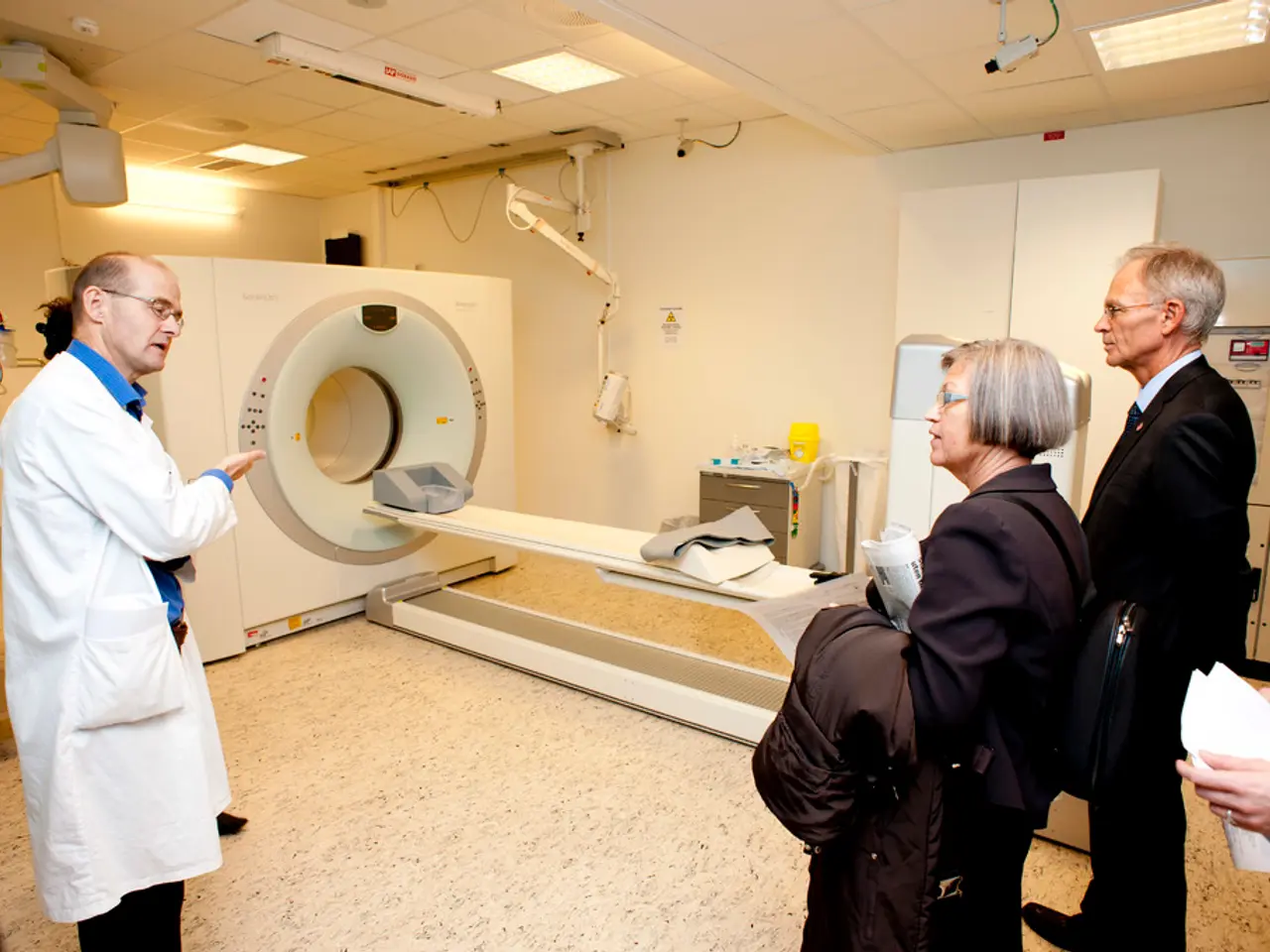Discourse on the Evolution of Radiology (Part 1)
The University of Pennsylvania Health System, a pioneer in healthcare innovation, has a rich history in the field of radiology. Dr. Mitchell Schnall, MD, PhD, a renowned physician at Penn Medicine's abdominal imaging services program and former chair of the department of radiology at the Perelman School of Medicine, has been at the forefront of this evolution.
In the 1980s, the University of Pennsylvania was an early adopter of high-field MRI, specifically 1.5 tesla, a significant leap from the standard 0.5 tesla machines in use at the time. This partnership with General Electric (GE) in their Schenectady, NY, R&D laboratory was described as a "synergy" and "very intimate". Radiologists played a crucial role in building the hardware during this collaboration.
However, the adoption of high-field MRI was not without controversy. In the early 80s, there was debate over the use of such high field strength MRI. But the controversy soon subsided as the benefits of the technology became apparent.
Fast forward to today, and the role of radiologists is evolving once again. Dr. Saurabh (Harry) Jha, MD, an associate professor of radiology at the Hospital of the University of Pennsylvania, discusses these changes in a recent episode of AuntMinnie's Keeping Up with the Radiologists podcast. The episode poses three key questions: why can't we just hire more radiologists, how should utilization be managed, and are the fundamentals of medical practice moving in the right direction.
One of the main points of discussion is the emergence of low-cost providers such as radiology extenders. This raises questions about safeguards once the radiology department doors are opened to nonphysicians and nonradiologists.
Dr. Schnall argues that radiologists will need to have expertise in quality systems management to ensure accurate results, even if they don't look at every pixel. He recommends taking a small part of your portfolio, thinking about a different system, building around it, and learning from test implementations.
Moreover, radiologists will spend more time managing quality systems, the most sophisticated diagnostic systems, and the most complex cases. The episode suggests that radiologists may be personally responsible for every word and every pixel in their reports in the future.
Interestingly, the Dalai Lama spent time with neuroscientists and radiologists over 30 years ago to explore the impact of meditation on the brain using a new MRI machine. This early exploration of the intersection between technology and mindfulness is a testament to the University of Pennsylvania's forward-thinking approach in radiology.
Dr. Jha, who obtained a master's degree in health policy research from the Leonard Davis Institute at the University of Pennsylvania, has also contributed to this evolution. He developed Value of Imaging, a set of radiology educational resources.
In addition to his academic roles, Dr. Schnall still serves as group co-chair of the ECOG-ACRIN Cancer Research Group since its founding in 2012. He is also the senior vice president for data and technology solutions for the University of Pennsylvania Health System.
The future of radiology at the University of Pennsylvania promises to be as innovative and groundbreaking as its past. With leaders like Drs. Schnall and Jha at the helm, the institution continues to push the boundaries of what is possible in the field of radiology.
Read also:
- Peptide YY (PYY): Exploring its Role in Appetite Suppression, Intestinal Health, and Cognitive Links
- Toddler Health: Rotavirus Signs, Origins, and Potential Complications
- Digestive issues and heart discomfort: Root causes and associated health conditions
- House Infernos: Deadly Hazards Surpassing the Flames








